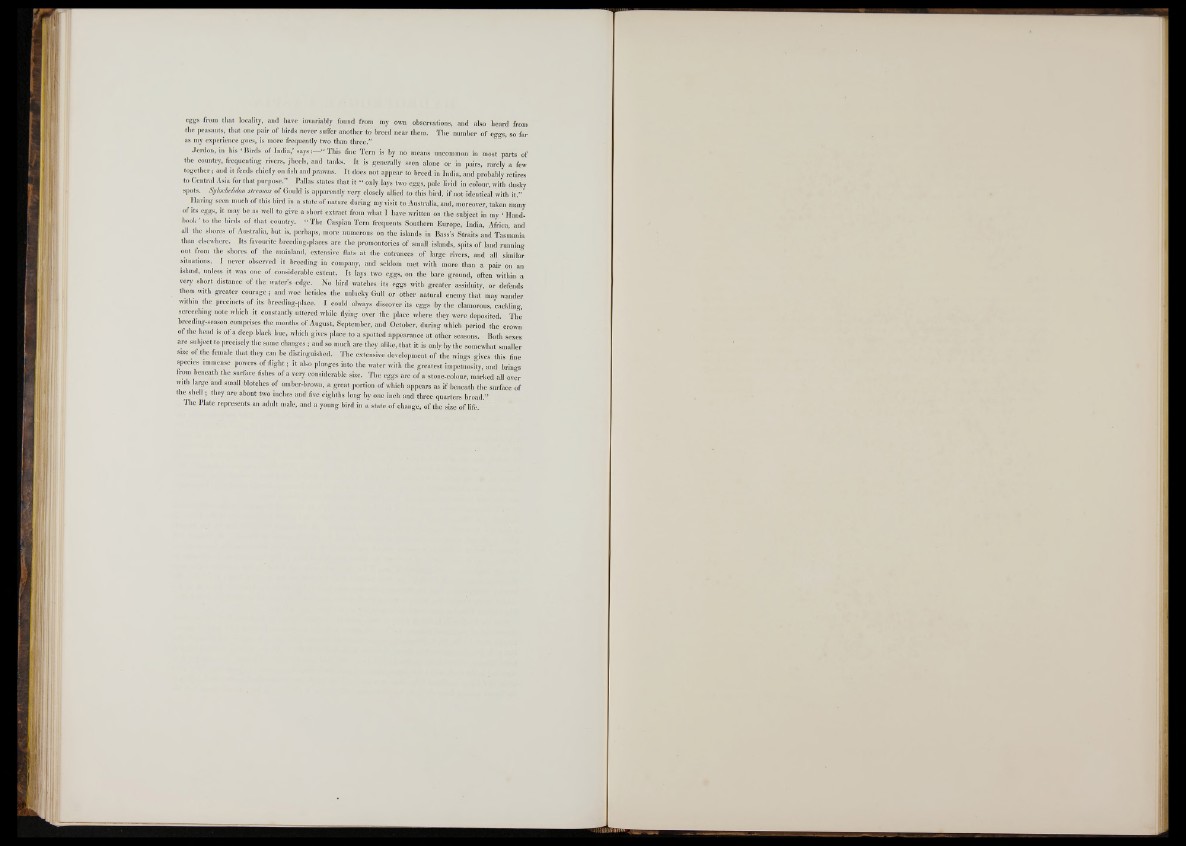
eggs from that locality, and have invariably found from my own observations, and also heard from
the peasants, that one pair of birds never suffer another to breed near them. The number o f eggs, so fer
as my experience goes, is more frequently two than three.”
Jerdon, in his |Birds of India,’ says:— “ This fine Tern is by no means uncommon in most parts of
the country, frequenting rivers, jheels, and tanks. It is generally seen alone or in pairs, rarely a few
together; and it feeds chiefly on fish and prawns. It does not appear to breed in India, and probably retires
to Central Asia for that purpose.” Pallas states that it “ only lays two eggs, pale livid in colour, with dusky
spots. SylocheUon slrenms of Gould is apparently very closely allied to this bird, if not identical with it.”
Having seen much o f this bird in a state o f nature during my visit to Australia, and, moreover, taken many
o f its eggs, it may be as well to give a short extract from what I have written on the subject in my • Handbook
to the birds o f that country. “ The Caspian Tern frequents Southern Europe, India, Africa, and
all the shores ot Australia, but is, perhaps, more numerous on the islands in Bass’s Straits and Tasmania
than elsewhere. Its favourite breeding-places are the promontories o f small islands, spits of land running
out from the shores of the mainland, extensive flats at the entrances of large rivers, and all similar
situations. I never observed it breeding in company, and seldom met with more than a pair on an
island, unless it was one o f considerable extent. It lays two eggs, on the bare ground, often within a
very short distance of the water’s edge. No bird watches its eggs with greater assiduity, or defends
them with greater courage; and woe betides the unlucky Gull or other natural enemy that may wander
within the precincts of its hreeding-place. I could always discover its eggs by the clamorous, cackling
screeching note which it constantly uttered while flying over the place where they were deposited. The
breediug-season comprises the months o f August, September, and October, during which period the crown
o f the head is o f a deep black hue, which gives place to a spotted appearance.aj other seasons. Both sexes
are subject to precisely the same changes ; and so much are they alike, that it is only by the somewhat smaller
size of the female that they can be distinguished. The extensive development o f the wings gives, this fine
species immense powers of flight; it also plunges into the water with the greatest impetuosity, and brings
from beneath the surface fishes of a very considerable size. The eggs are o f a stone-colour, marked all oyer
with large and small blotches o f umber-brown, a great portion o f which appears as if beneath the surface of
the shell; they are about two inches and five eighths long by one inch and three quarters broad.”
The Plate represents an adult male, and a young bird in a state o f change, of the size o f life.